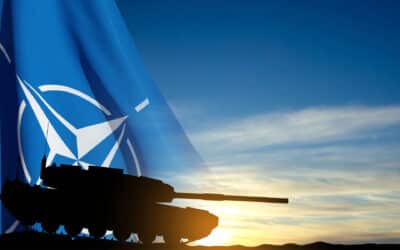Negative rates are the destruction of money, an economic aberration based on the mistakes of many central banks and some of their economists, who all start from a wrong diagnosis: the idea that economic agents do not take more credit or invest more because they choose to save too much and therefore saving must be penalized to stimulate the economy. Excuse the bluntness, but it is a ludicrous idea.
Inflation and growth are not low due to excess savings, but because of excess debt, which perpetuates overcapacity with low rates and high liquidity and zombifies the economy by subsidizing the low-productivity and highly indebted sectors and penalizing high productivity with rising and confiscatory taxation.
Historical evidence of negative rates shows that they do not help reduce debt, they incentivize it. They do not strengthen the credit capacity of families: the prices of nonreplicable assets (real estate, etc.) skyrocket because of monetary excess and because the lower cost of debt does not compensate for the greater risk.
Investment and credit growth are not subdued because economic agents are ignorant or saving too much, but because they don’t have amnesia. Families and businesses are more cautious in their investment and spending decisions, because they perceive, correctly, that the reality of the economy they see each day does not correspond to the cost and the quantity of money.
It is completely incorrect to think that families and businesses are not investing or spending. They are only spending less than what central planners would want. However, that is not a mistake from the private sector side, but a typical case of central planners’ misguided estimates, which come from using 2001–07 as “base case” of investment and credit demand instead of what those years really were: a bubble.
The argument of the central planners is based on an inconsistency: that rates are negative because markets demand them, not because they are imposed by the central bank. If that is the case and the result would be the same, why don’t they let rates float freely? Because it is false.
Think for a moment what type of investment, company, or financial decision is profitable with rates at –0.5 percent but unviable with rates at 1 percent. A time bomb. It is no surprise that investment in bubble-prone sectors is rising with negative rates and that nonreplicable and financial assets are skyrocketing.
Instead of strengthening economies, negative rates make governments more dependent on cheap debt. Public debt trades at artificially low yields, and politicians abandon any reformist impulse, preferring to accumulate more debt.
The financial repression of central banks begins with a misdiagnosis assuming that low growth and below-target inflation is a problem of demand, not of the previous excess, and ends up perpetuating the bubbles that it sought to solve.
The policy of negative types can only be defended by people who have never invested or created a job, because no one who has worked in the real economy can believe that financial repression will lead economic agents to take much more credit and strengthen the economy.
Negative rates are a huge transfer of wealth from savers and real wages to the government and the indebted. A tax on caution. The destruction of the perception of risk that always benefits the most reckless. It is a bailout of the inefficient.
Central banks ignore the effects of demography, technology, and competition on inflation and growth of consumption, credit, and investment, and with the wrong policies generate new bubbles that become more dangerous than the previous ones. The next bubble will again increase countries’ fiscal imbalances. Even worse, when central banks present themselves as the agents that will reverse the effect of technology and demographics, they create a greater risk and bubble.
When this happens, it becomes necessary for to protect one’s savings with gold, silver, inflation-linked instruments, and stocks in sectors that do not suffer from negative rates.
This article was originally featured at the Ludwig von Mises Institute and is republished with permission.































